WINTER
2007-8 part 1: Storm Odyssey - Pembrokeshire!
- the giant seas of December 1st-2nd
BACK TO WEATHER-BLOG MENU
New! Fine Art Prints & digital
images for sale-
Welsh Weather & Dyfi Valley landscapes Slide-Library
- Click HERE
The long uneventful Autumn continued
through November but December arrived in spectacular
fashion with the first weekend providing me with one of
the most enjoyable photo-shoots I have been on in a long
time! The results are below and it's fair to say I was
mightily pleased with them - one of those days where
careful preparation paid off in no uncertain terms. Quick
fishy interlude first....
 Not a shot from last Summer, but in mid-November, at our hallowed ground we call Cardiac Hill, on the end of the Lleyn Peninsula. My regular fishing-buddies Alun and Gary in the background. On this late Autumn day we were all sweating by the time we had yomped to the rock-ledges and then proceeded to catch mackerel - in mid-November?!?! Warming seas, settled weather, either way it's quite something, but then this year has seen its fair share of interesting catches in Welsh waters - Amberjacks off Milford Haven for instance, and tuna were observed attacking a mackerel shoal off Aberdyfi in October. About three feet long, they were probably Albacore, which have been caught regularly off SW Ireland for a few years now. Climate change certainly brings its fair share of curiosities... Now to December. For a number of days, an unusually large ground-swell had been forecast. Ground-swells are quite different from wind-driven waves. They are, if you like, large ripples that cross the ocean - like those that radiate out across a pond if you throw a stone in. In the case of the Atlantic, the "stone" is typically a large area of storm-force or stronger winds, hundreds of miles away mid-ocean, working in one direction over large distances of water over a long time. As a result, an awful lot of energy is transferred into the water. Large waves, whose energy can extend to a considerable depth below surface, move one after another across the sea, travelling great distances whilst hanging on to a lot of their power. When they reach the shallows, they build up like small tsunamis. This may be observed at times on the UK coast, where for example the weather may be calm but big rollers are pounding the shore to the delight of surfers. This differs from the more "messy" chop produced by onshore winds, which beach fishermen much prefer. There are, unsurprisingly given the popularity of surfing, a number of websites where wave and swell forecasts may be obtained. I use Magic Seaweed - just Google it to find the site. For some days leading up to December 1st, the big swell was evident in the forecast. Althought it was a neap tide that weekend, making coastal flooding a low risk, some good opportunities for photos looked possible if I could find a rocky section of coastline with deep water close-in. Furthermore, the convective outlook for squally, thundery showers on the 1st suggested that light conditions, in between the squalls, would be good or better. When a big Atlantic low generates a major ground-swell, Ireland acts as a breakwater, sheltering the Welsh coast from the worst of the waves - except for SW Pembrokeshire. That, then, became the target area. |
|
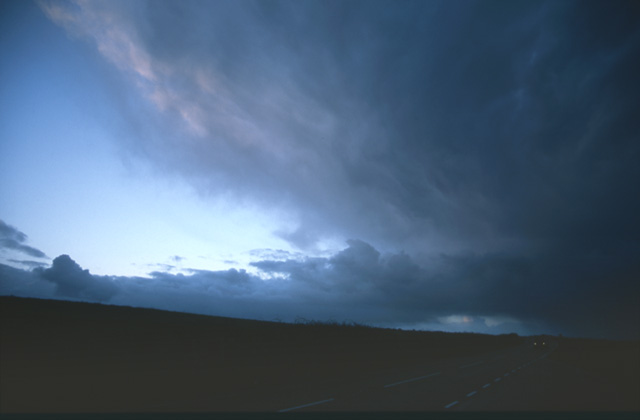 Leaving the dark and almost deserted streets of Machynlleth, I headed down the coast road past Aberystwyth and Aberaeron. As dawn broke the first of many cumulonimbus thunderheads became visible.... |
|
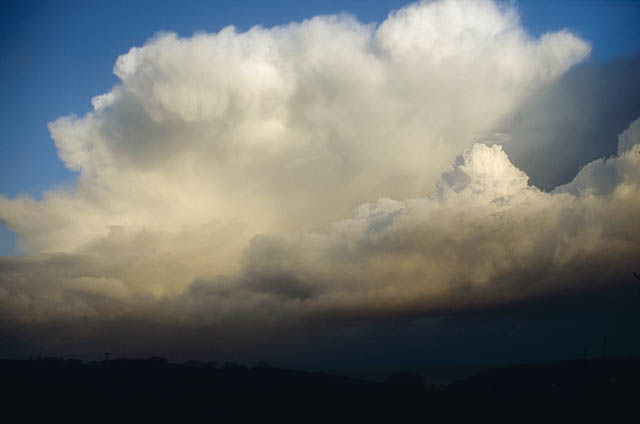 This one, lit up by the rising sun, was just past Llanarth... |
|
 Pressing on, for high tide was in mid-morning, I passed through Cardigan and, turning off the Fishguard road just past Eglwyswrw, headed up over the Prescelli hills towards the target area. On the highest part of the road, where there is an excellent view south and west, I pointed the 300mm lens at this mass of shower-clouds overhanging the silhouetted clear-fell. Forestry plantations are usually regarded as ugly scars on the landscape: not so here, I mused.... |
|
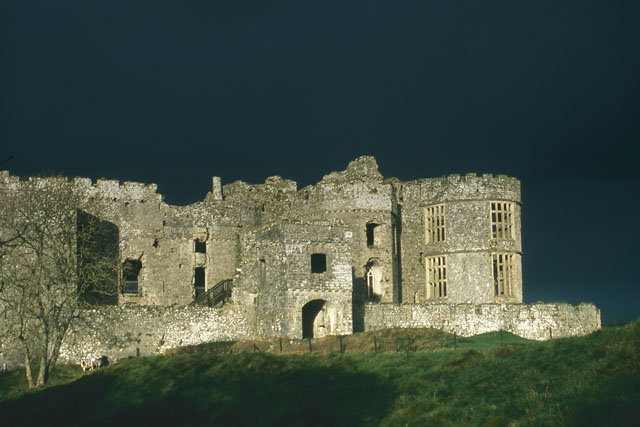 ...continuing the drive, I happened to pass Carew Castle just as a chink opened up in the clouds. I was getting remarkable bits of luck so far regarding the light! Would it last? Skirting past Pembroke itself, I headed on through Stackpole towards the first target - Stack Rocks. This whole area lies within a military firing range, but it was open to walkers, as I found out by checking in advance, not having been here before.... |
|
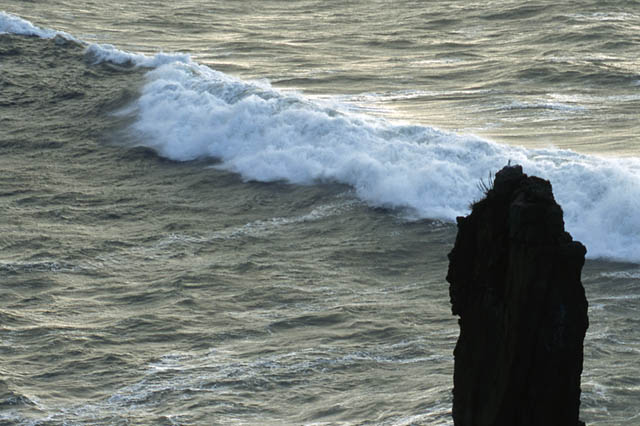 I was not disappointed! Here is one of the sea-stacks, with an enormous breaking roller whooshing past.... |
|
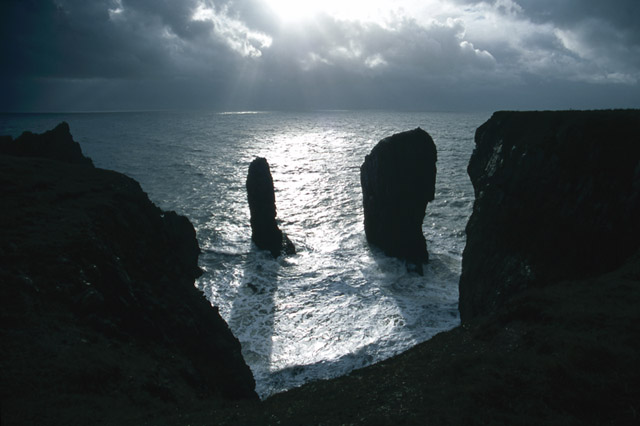 The squally showers that had lashed me all the way from Carew Castle had now pushed on eastwards and the light was amazing! After about half an hour here, I headed for my next stop, St Govans' Head... |
|
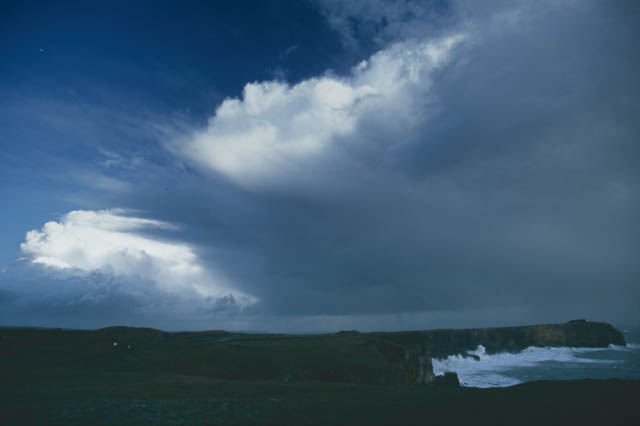 ...once again arriving in the aftermath of a heavy (and not so photogenic) squall.... |
|
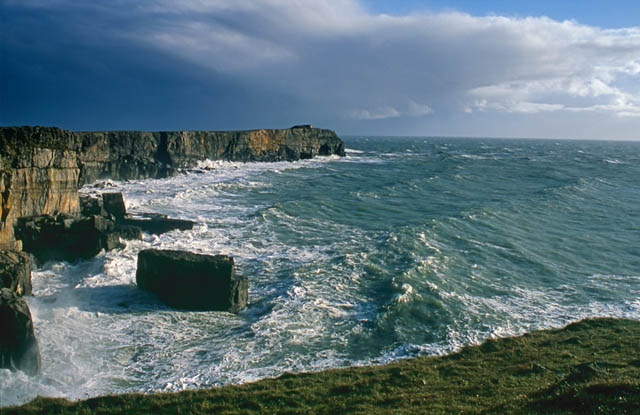 The monster swell is clearly evident in this image. |
|
 Approaching the headland... |
|
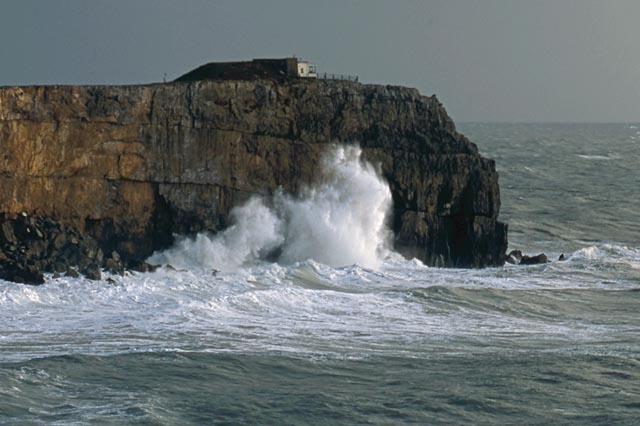 ...and smashing against its 30-40m cliffs. |
|
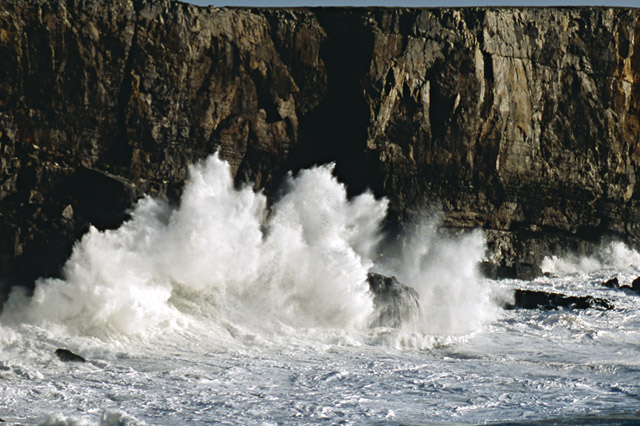 It was a case of finding somewhere out of the chilly wind and settling down with the telephoto lens. Timing is everything: I took a lot knowing that there would be some good ones amongst them... |
|
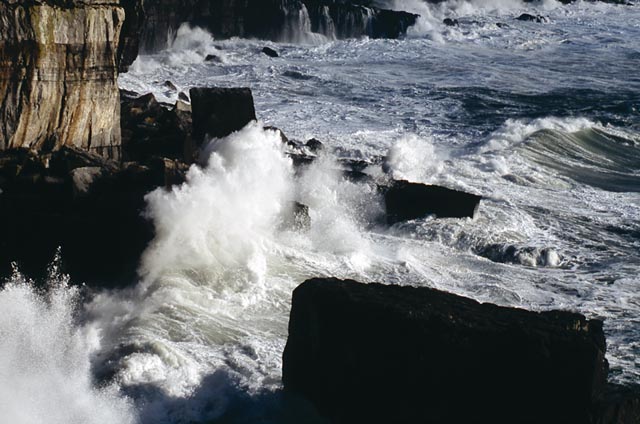 ...not a day for swimming! |
|
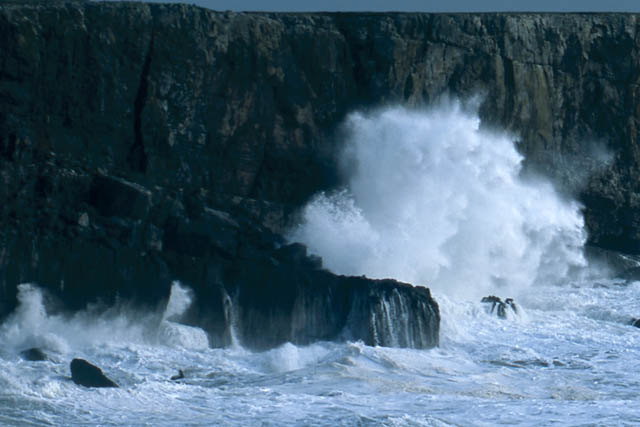 Eventually a large cloudbank drifted up and I lost the best light. I was cold too, so I decided to head for the third target, Strumble Head, in time for sunset. It was on the way home, too, vaguely.... |
|
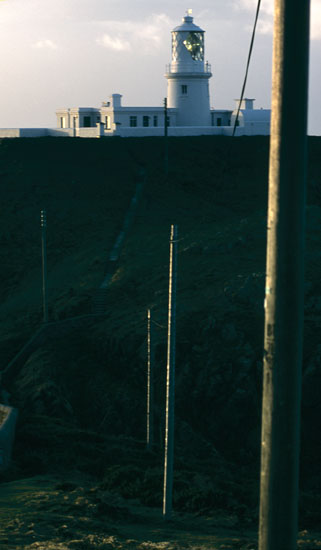 ...so having driven via Newgale (and an excellent cafe-stop) and Mathry, I got there in time. Plan A was still working! |
|
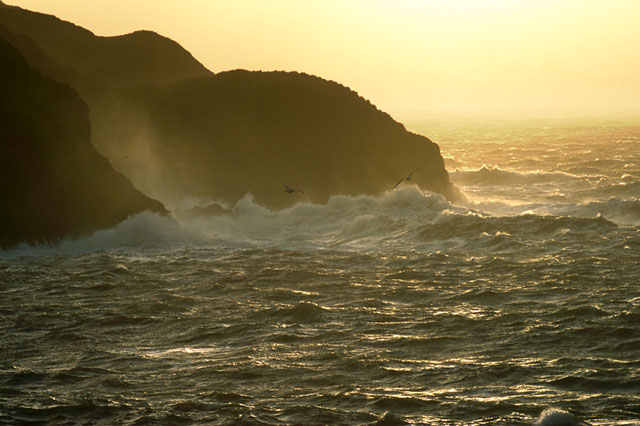 The wind was by now a fair bit stronger, but there is a viewing-spot at Strumble, with a wall to rest the camera on. Shooting straight into a strong low-angle sun is tricky, but I was pleased with this one, especially with the gulls adding a bit of scale. Cloud once again rolled up from the west and the light and temperature both fell sharply. That put an end to any more photography. I set off and after 80 miles of oncoming headlights and encountering further squalls that rocked the vehicle, I was back home, at the fireside of the White Lion, just twelve hours after setting out on this odyssey, this voyage with the forces of the planet, its slow but unstoppable heartbeat of tides, weather and seasons. Such things are humbling, they develop a sense of perspective, and ought to be made compulsory! The following day, keen to use the remaining shots up on the films, I headed for Aberystwyth at high tide. That's the next part! |
|
BACK TO WEATHER-BLOG MENU New! Fine Art Prints & digital images for sale- Welsh Weather & Dyfi Valley landscapes Slide-Library - Click HERE |